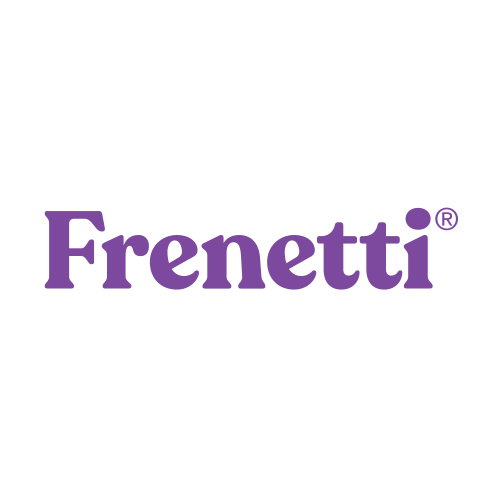
Smarter. More human centered. From reaction to action.
To what extent is the variety of nurse performance levels within a team taken into account in the capacity management in your organization?
The Frenetti platform is a unique way to make teams work as optimally as possible. If the team composition is less and less optimal, there may not be enough qualified staff to provide the care. This can lead to a vicious cycle.
The missing factor in the current method of nurse capacity?
The Frenetti platform can be seen as a new or additional method within the current way of working. Decision-making and actions are currently mainly taken based on the number of FTEs, initial/further training, training, the number of places available for patient/client care, and the level of care. However, it appears that despite these indicators, it is possible that departments or teams do not manage to provide care due to continuously changing circumstances. A team seems to need more time to perform their work, and tasks are left behind, jeopardizing the quality of care. This situation can also lead to the failure of professionals due to increasing pressure.
As a result, the team composition is changing more and more, and the result is that insufficient qualified personnel are left behind to provide the care 24/7. This can lead to a vicious circle that is difficult to get out of. When a department or team cannot provide optimal care, it is important to look for the cause. Analyze and evaluate whether the current method of the capacity mix, planning, and scheduling yields the desired result in the present time of shortages and failures among professionals.
“Use scans for personnel policy
The Frisian hospitals want to use the scans more in the future for personnel policy. ‘You can take the available competencies into account in the duty schedules, and you can see better now the mix of education and skills,’ says G. van Buiten, sector manager of Tjongerschans hospital [...]. ‘Tjongerschans has traditionally been a hospital with many MBO nurses. In recent years, we have focused on a mix of MBO and HBO graduates. You can now manage that in a more goal-oriented way.’ The ultimate goal is for better-equipped nurses to improve the quality of care.”
Capacity management based on performance levels!
The Frenetti platform can be seen as a new or additional method within the current way of working. Decision-making and actions are currently mainly taken based on the number of FTEs, initial/further training, training, the number of places available for patient/client care, and the level of care. However, it appears that despite these indicators, it is possible that departments or teams do not manage to provide care due to continuously changing circumstances. A team seems to need more time to perform their work, and tasks are left behind, jeopardizing the quality of care. This situation can also lead to the failure of professionals due to increasing pressure. As a result, the team composition is changing more and more, and the result is that insufficient qualified personnel are left behind to provide the care 24/7. This can lead to a vicious circle that is difficult to get out of.
"You can take into account the existing competencies in the shift schedules and you can now see better what the mix of education and skills is." - G. van Buiten, Sector Manager, Tjongerschans Hospital (2018).
How does it work?
At the institutional level, set the occupancy standard according to the complexity of care classification levels (low, medium, high intensive) and set percentages for skills levels (beginner, competent, proficient, and expert).
Assign the optimal capacity mix per department or team. This should be substantiated as much as possible and on the basis of indicators.
Analyze and identify where there is a gap between the occupancy reference criteria and deployable capability levels.
Discuss the findings and take action with each other.
Goal-oriented team development to reduce gaps.
Redistribute deployable capacity if there are temporary or long-term shortages within a department or team, and scaling up is necessary.
Example of how to integrate performance levels in the capacity management
The situation, problem, and challenge
Being able to provide the most optimal care 24/7 is an increasing challenge due to the increasing demand for care, the more complex care, and a shortage of qualified professionals. Decision-making and actions are currently mainly taken on the basis of numbers of FTEs, initial training, training followed, and the number of places available for patient-client care and the care level. However, it appears that despite these indicators, it sometimes may appear that departments or teams are unable to meet the demand for care and everything related to it. A team seems to need more time to perform their work, and tasks are left behind, jeopardizing the quality of care. This situation can also lead to the failure of professionals due to increasing pressure on them. The composition of the team changes, and the result is that sometimes there are not enough qualified personnel left to provide health care 24/7.
Intervention and result
Take timely action using the current data and results of the three different types of Frenetti Assessments. Analyze and evaluate whether the current method of capacity mix, planning, and scheduling give the desired result. It is possible that you signal that staff is being overworked. To address this, it is important to match the individual’s performance level with their workload. It is also possible that there are not enough professionals of a certain level of performance available to provide optimal care 24/7. Look inside or outside the team which individuals have the ambition and potential to move to the required or next level of performance as quickly as possible. This results in continuous and goal-oriented training in competences and skills so that the team is sufficiently equipped to be able to deliver the increasing complexity of care 24/7.





